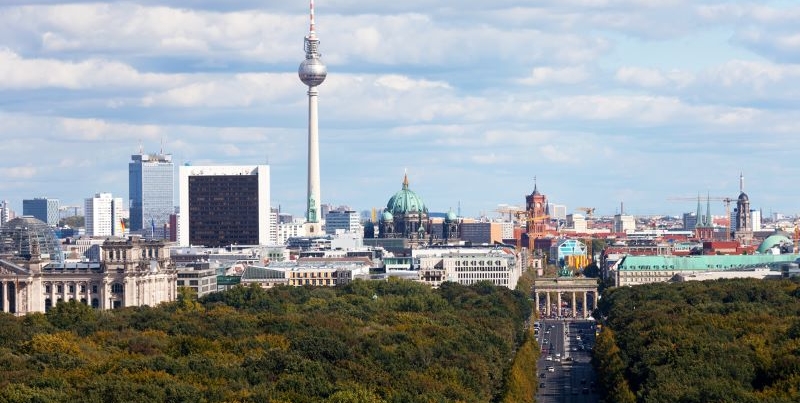| By J. Robert Parks |
The alliance of Britain and the United States with the Soviet Union during World War II was always one of convenience—the three Allied powers had a common enemy in Nazi Germany. So it wasn’t a surprise when that alliance quickly turned tense after the war. Although the United States and the Soviet Union never fought directly, there were several points in the next 40 years when conflict was a legitimate possibility. One of the first instances, the Berlin blockade and airlift, started 75 years ago, on June 24. Teachers and educators looking to instruct students about the conclusion of World War II and the beginning of the Cold War will find a trove of resources in Gale In Context: World History.
Even before World War II ended in September 1945, the relationship between the United States and Britain, on one hand, and the Soviet Union on the other, had started to deteriorate. The Potsdam Conference that took place in July–August 1945 was a meeting of U.S. President Harry Truman, British Prime Minister Winston Churchill, and Soviet leader Joseph Stalin to try to determine what a postwar world should look like, but the optimism that exuded during the Yalta Conference five months earlier had degenerated into hostility. On March 5, 1946, Churchill made a famously combative speech when he condemned the Soviet Union for bringing an “iron curtain” down across Europe.
The iron curtain Churchill referenced was the division between Western Europe, which was under the influence of the democracies of the United States and Britain, and Eastern Europe, which was under the domination of the Communist Soviet Union. This division reflected how the war had ended. Soviet troops had advanced into eastern Germany and occupied the countries of Poland, Bulgaria, and Romania, where they installed Communist governments. Berlin, in eastern Germany, was well within the Soviet zone of occupation, but it had been divided into four sectors after the war, with the Soviet Union, United States, Britain, and France each controlling one part.
In early 1948, disagreements intensified over the future of Germany. In mid-June, the United States, Britain, and France attempted to introduce a new German currency to bring down inflation, but the Soviet Union banned its use in the areas it controlled. The Soviet Union introduced its own new currency and started to cut Berlin off from the West. That included establishing roadblocks to prevent supplies from entering Berlin, outlawing river barge traffic, and closing down the railroads―all with the intention of forcing the other countries to give up control of the city. On June 24, 1948, the Soviet Union announced it would not allow food or supplies into West Berlin, which was controlled by the other three governments. The blockade had begun.
Two days later, the Berlin airlift began, as U.S. and British airplanes started flying supplies into Berlin. The Americans called it “Operation Vittles,” while the British took a punnier approach and called it “Plain Fare.” There were hundreds of flights a day delivering thousands of tons of cargo, and they took place no matter how bad the weather. One of the pilots, Lieutenant Gail Halvorsen, started taking bundles of candy and gum to deliver to children who gathered near the Berlin airfield, and he was joined by other pilots; this practice generated enormous goodwill.
The Soviet Union made no attempt to stop the airlift. It believed the Allies would eventually give up the effort, and it didn’t want to cause a war. But instead of the Allies stopping, it was the Soviet Union that eventually relented; on May 12, 1949, it announced the end of the blockade. The airlift continued for another four months to fully resupply the city. In the end, over 275,000 flights were made during the airlift, with more than 2 million tons of supplies brought into Berlin.
Historians have disagreed over whether the airlift was undertaken for symbolic reasons or because Berlin was of strategic importance. What isn’t disputed is that the Cold War intensified in the years to come. Germany was officially divided into two countries, East and West Germany, and Berlin was divided into two parts. East Germans started using West Berlin to escape to the West, so in 1961 East Germany built a wall around West Berlin―that wall stood until 1989, when Germany was reunited.
About the Author
J. Robert Parks is a former professor and frequent contributor to Gale In Context: U.S. History and Gale In Context: World History who enjoys thinking about how our understanding of history affects and reflects contemporary culture.


